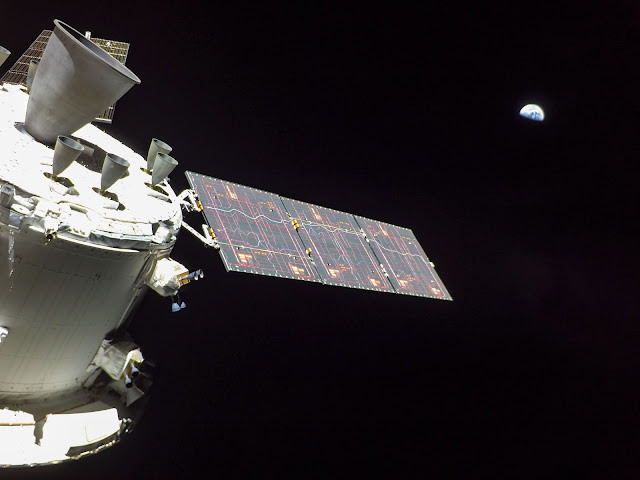Orbital Dancing: Earth & Moon Views | NASA's Artemis I Orion Spacecraft
Flight Day 15: Orion and the Moon
Orion’s European-built service module has provided the propulsive capabilities to adjust the spacecraft’s course in space via its 33 engines of various types, and serves as Orion’s powerhouse, supplying it with electricity, thermal control, and air and water for future crews, in addition to propulsion. Artemis I is the first time NASA is using a European-built system as a critical element to power an American spacecraft. Provided by the European Space Agency (ESA) and its partner Airbus Defence and Space, the service module extends NASA’s international cooperation from the International Space Station into deep space exploration.
The first in a series of increasingly complex missions, Artemis I is an uncrewed flight test that will provide a foundation for human deep space exploration. It will demonstrate NASA's commitment and capability to extend human existence to the Moon and beyond. Orion is completing a 25-day test of all key systems. It will travel 280,000 miles from Earth, thousands of miles beyond the Moon. Orion will stay in space longer than any ship for astronauts has done without docking to a space station and return home faster and hotter than ever before.
On the Artemis III Mission, NASA will land the first woman and the first person of color on the surface of the Moon, paving the way for a long-term lunar presence and serving as a steppingstone on the way to Mars.
Learn more about Artemis I at:
https://www.nasa.gov/specials/artemis
https://www.nasa.gov/artemis-1
Credit: NASA's Johnson Space Center (JSC)
Image Capture Dates: Nov. 29-30, 2022
#NASA #ESA #Space #Earth #Moon #Artemis #ArtemisI #Orion #Spacecraft #DeepSpace #MoonToMars #JourneyToMars #Science #Engineering #Technology #Exploration #HumanSpaceflight #SolarSystem #UnitedStates #Europe #International #STEM #Education









.jpg)


